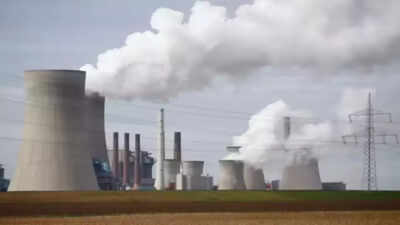
NEW DELHI: India’s coal-fired electricity generation in May saw its steepest decline in five years, driven by a drop in overall power demand and a surge in renewable energy output, according to a Reuters analysis of government data. This marked the first fall in power demand since August and coincided with record-high generation from clean energy sources.The output from natural gas-powered stations also dropped significantly, marking the most substantial reduction in nearly three years, as revealed by Grid India data. This decline occurred alongside increased production from cleaner sources, including hydroelectric and nuclear facilities.This reduced requirement for fossil fuels in India’s electricity sector, as the world’s second-largest coal importer and fourth-biggest LNG purchaser, occurs during a period of market pressure on these fuel prices.“Demand from the power sector – typically strong during peak season – remained limited. Additionally, economic headwinds have weighed on non-power industries,” Indian coal trader I-Energy said in a note this week, as per Reuters.Asian LNG prices have reduced by over 15 per cent this year, whilst thermal coal prices have fallen to their lowest in more than four years, affected by reduced demand from China and India, the primary coal-importing nations.Data from Grid India indicates that coal-fired power generation decreased by 9.5 per cent year-on-year to 113.3 billion kilowatt-hours (kWh) in May, representing the largest annual decline since June 2020, when COVID-19 restrictions were in effect.Both Chinese and Indian utilities have reduced their reliance on imported coal and LNG this year, influenced by substantial coal reserves and slower electricity demand growth. Last year, India required gas-based power stations to operate during high demand periods caused by elevated temperatures.Government data shows that the total electricity generation in May 2025 dropped 5.3% year-on-year to 160.4 billion kilowatt hours (kWh), mainly due to cooler temperatures, officials said. Peak power demand was also 8% lower at 231 GW, compared to 250 GW during a heatwave in May 2024.Despite the overall dip, renewable energy output surged 17.2% to a record 24.7 billion kWh, making up 15.4% of the total power mix — the highest share since 2018.The share of coal-based power dropped to 70.7%, down from 74% a year ago — the lowest since June 2022. Hydropower generation rose 8.3% to 14.5 billion kWh, accounting for 9% of total power output. In contrast, natural gas-based generation fell sharply by 46.5% to 2.78 billion kWh, marking the steepest fall since October 2022.














